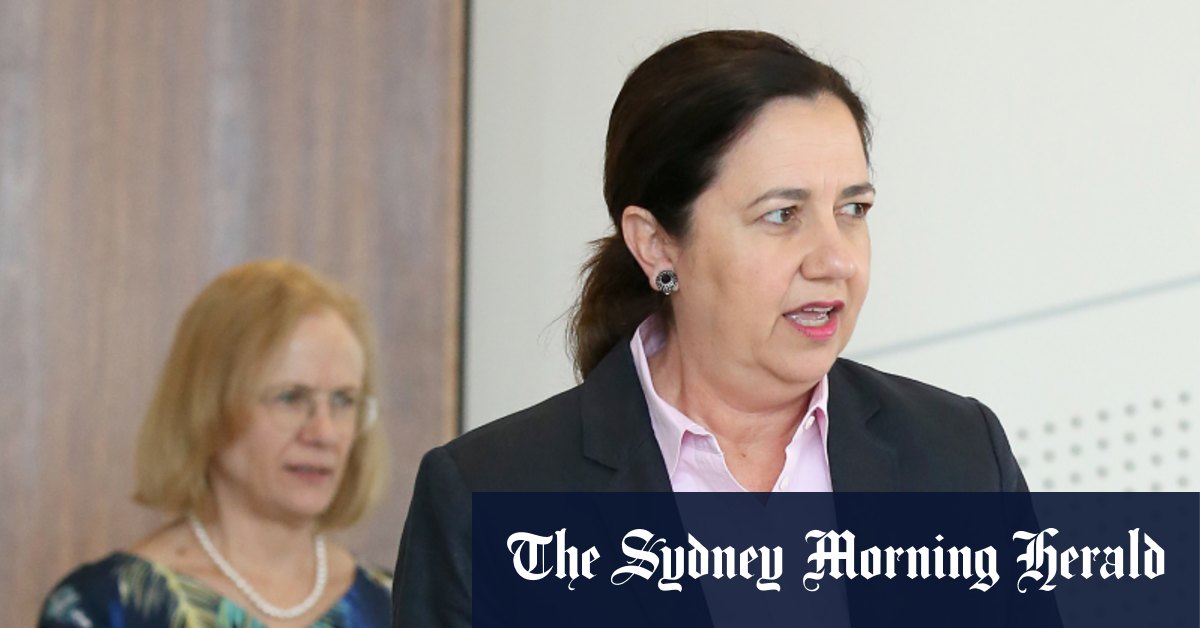She advised that anyone who travelled to Wuhan for Chinese New Year and came back unwell should see a doctor and isolate themselves.
That advice came one day after the World Health Organisation confirmed there had been human-to-human spread.
Loading
Queensland’s first case came days later, on January 28, and the next day Dr Young became the first health officer in Australia to declare a public health emergency.
In the weeks that followed the first few confirmed cases, hospitals braced for more than 50,000 Queenslanders – enough to fill Suncorp Stadium – to be hooked up to ventilators in intensive care units.
SARS-CoV-2, the virus that causes COVID-19, was expected to infect one in four Queenslanders and kill more than 30,000 if the state failed to “flatten the curveâ€.
The state’s best weapon against the virus would be Australia’s most experienced chief health officer, Dr Young, who has managed to stay ahead of the curve and prevent widespread community transmission.
Serving in the role since 2005, Dr Young had advised four premiers through six epidemics, including MERS, swine flu and the 2009 dengue outbreak.
Three days before Australia’s first confirmed case of COVID-19, Dr Young thought “now, this is going to be pretty awfulâ€.
“I hoped I was wrong and that I was over-interpreting the information,†she told Brisbane Times last year.
“Unfortunately, I think I was right to be wary.
“I can remember going into that weekend thinking ‘this might be the last weekend of sanity before this all blows’, and it blew on the Saturday.
“To be honest with you, I was really worried. I thought, ‘this is the start and it’s going to be a nightmare’,†Dr Young said.
Standing shoulder-to-shoulder with Dr Young throughout the pandemic, Queensland Premier Annastacia Palaszczuk acted on the health advice every step of the way “to protect the health of Queenslandersâ€.
“We don’t want to just flatten the curve, I think we’re going to smash the curve,†she told Queenslanders during the height of the virus lockdown.
The Australian Medical Association Queensland has praised state government for “continuing to act in the best interests of the health of Queenslanders and follow the CHO’s evidence-based medical adviceâ€.
Ms Palaszczuk’s determination on border restrictions was a major contributor to her success at the October state election.
Queensland’s management of the pandemic has, by national and most international standards, been outstanding.
The state’s death toll equates to about 1.15 deaths per million people, versus 35 Australian deaths per million.
The US has a mortality rate of 1205.4 deaths per million people and Britain 1326.2 deaths per million people.
Public health expert Linda Selvey, an epidemiologist at the University of Queensland, says the state’s success has been a mix of good luck and good management.
“It’s a bit of both,†she said.
“If you think of where the vast majority of importations have been it’s not been in Queensland, it’s been in NSW and Victoria, because they’re the bigger states and have more international arrivals.
“They also have challenges because they have higher populations and higher population density. So all those things feature, but we’ve also managed it very well.â€
Professor Selvey said Queensland authorities have “done extremely wellâ€.
“We’re very fortunate to be living in a place which has no COVID transmission happening, and hasn’t for some time,†she said.
“So we are in a good position here but we can’t afford to be complacent.â€
Lydia Lynch is Queensland political reporter for the Brisbane Times
Stuart Layt covers health, science and technology for the Brisbane Times. He was formerly the Queensland political reporter for AAP.
Most Viewed in Politics
Loading

